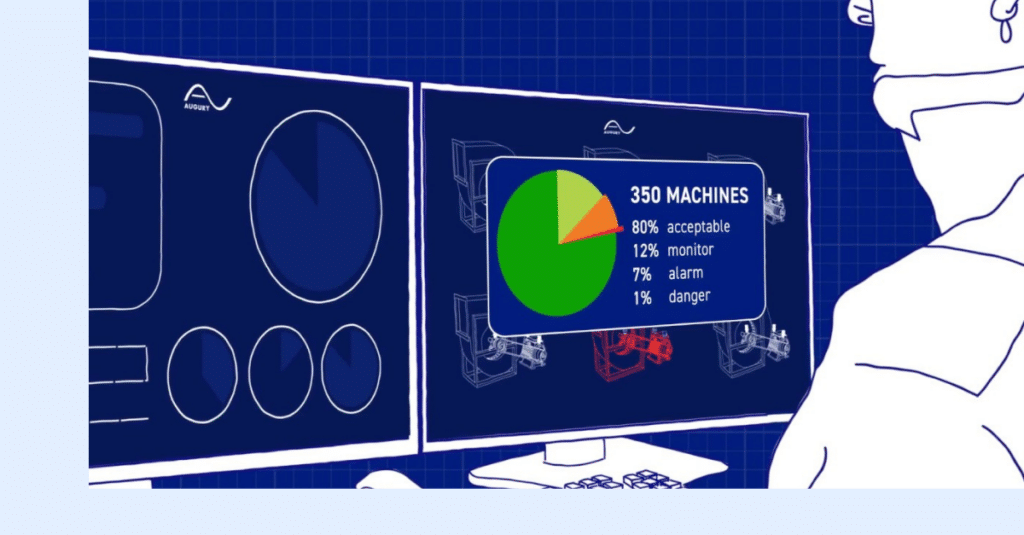
Augury’s new R4000-series sensors are already doing what they’re supposed to be doing. However, the real story comes together early next year, according to Augury’s Head of Product and Portfolio Marketing James Newman. That’s when the Cassia X-2000 is deployed as the leading industrial Bluetooth gateway optimized for industrial IoT applications. “With sensor/gateway integration, a whole new IoT chapter can begin: faster, more reliable, more flexible, and able to put AI wherever you need it most. Bring on your edge use cases!”
Life On The Edge
Three years ago, Augury Co-Founder and CPTO Gal Shaul was asked in an interview what emerging technology he believes has the most potential for manufacturing. “I’m really excited about the movement around AI – especially edge AI, which can work at the endpoint and use models as accurately as those using data from a platform. It will enable us to make many new transitions in the market. […] In a few short years, we will be unable to remember how things used to be because it will all be so different.”
For years, edge computing represented the future. Allowing sensor-enabled devices to collect and process data closer to the manufacturing action would enable more AI-led decisions in near real-time, creating a new rainbow of potential use cases to benefit both productivity and those working on the factory floor. But yes, it remained tricky in terms of issues such as security concerns, scalability, and sheer complexity.
Until now. Now, it’s payback time.
Our new Machine Health sensing platform can now run AI via our new Halo™ R4000 series sensors, the upcoming Cassia X2000 Enterprise Bluetooth IOT Gateway, and, of course, as we’ve done traditionally, the Cloud. With our wholly new IoT, we are now experimenting with customers to figure out what works best to double down on increasing value.
In other words, welcome to the world of Machine Health 2.0 – where the long-vaunted potential of edge computing can finally reach fruition.
“AI-powered end-to-end condition monitoring solution designed for cost-effective monitoring at scale with maximum flexibility.” Read the full press release.
Big Story: Rugged, Future-Proof Sensor
The new Halo™ R4000 series is the world’s first Edge AI-capable Machine Health sensor. As our most miniature industrial-grade sensor yet, the R4000-series features longer battery life, smart and dynamic diagnostics, self-healing connectivity, and wet environment protection – it’s ready to cover any asset that matters, anywhere.
Thanks to the upcoming HexaLock sensor mounting system, designed for greenfield and brownfield environments, the sensors are easier to install and maintain, eliminating some of the challenges of other designs.
One of the main benefits of the R4000 sensor is increased flexibility, in terms of costs, capabilities, and scaling.
Flexibility In Use – And Costs
One of the main benefits of the R4000 sensor is increased flexibility, in terms of costs, capabilities, and scaling.
You’ll naturally still want the full Cloud-backed coverage for your critical assets. This enables deep and descriptive diagnostics and provides the raw data that helps our vibration analysts truly understand what’s going on with a particular machine. However, the sensor chip can now also process this data more efficiently before sending it to the Cloud, thereby saving bandwidth and transmission costs.
However, in terms of headline news, the chip will also let you run sophisticated AI models on the edge for less critical assets to provide actionable insights, such as basic anomaly detection – helping customers unlock cost-effective total plant coverage.
Thanks to collaboration with various partners and early adopters, we have solved this IoT connectivity problem.
Bigger Story: New IoT
All these new innovations – the sensor, the HexaLock, and the Cassia X2000 Enterprise Bluetooth IOT Gateway – means new IoT.
We all know working with Internet of Things technologies isn’t always easy – too many things can go wrong between reading the data and getting it to the Cloud, where the more in-depth AI magic can happen. Thanks to collaboration with various partners and early adopters, we have solved this IoT connectivity problem.
For instance, the gateway can apply AI for specific value-added applications, such as auto lubrication.
Opening The Innovation Floodgates
Due for general implementation in early 2025, the Cassia gateway is currently being tested in the field with customers. Significantly, and thanks to the increased efficiency of the overall system, we can further increase the number of sensors to 40 per gateway – more than twice what we could do previously.
The gateway’s ability to cover a much wider range will also help many scenarios, not least of which is safety – particularly in harder-to-reach or environmentally restrictive areas where it’s best to minimize human-machine interaction.
You’ll also be able to run custom firmware from the gateway itself. For instance, the gateway can apply AI for specific value-added applications, such as auto lubrication.
Can you tell we’re excited? The time has truly arrived to make a difference. Are you ready to double-down with us.
Do you have a use case that might benefit from AI on the edge? Reach out! Let’s talk!
Or first, check out the full press release.




